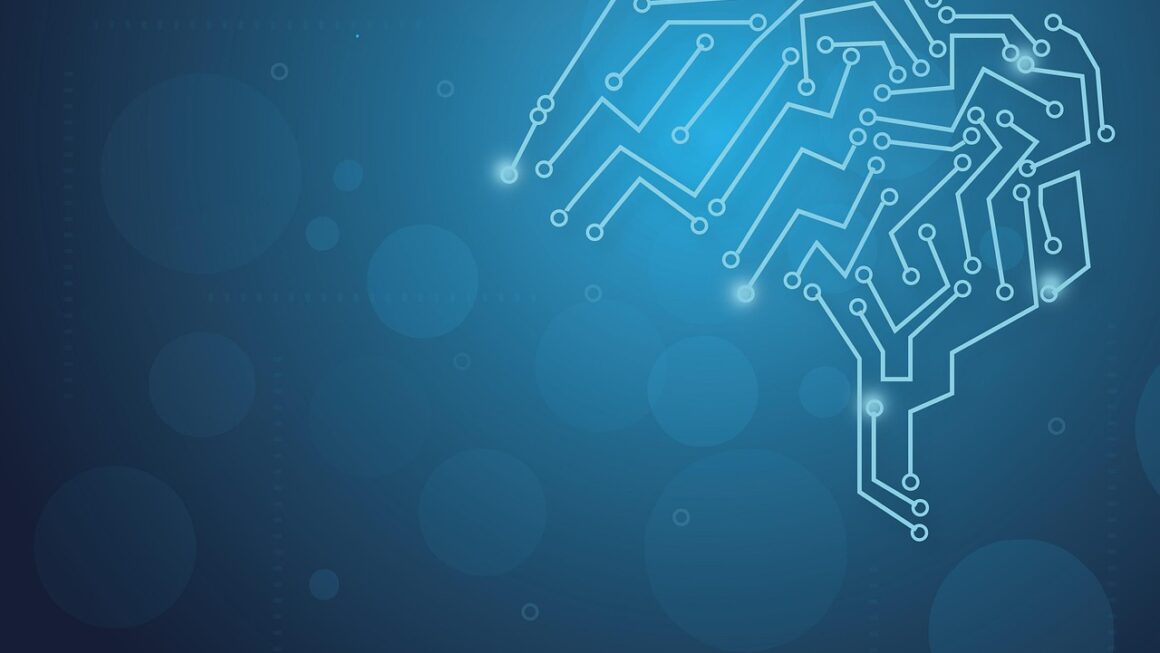Machine learning development is transforming industries, offering unparalleled opportunities to automate tasks, gain insightful predictions, and build intelligent applications. Navigating this landscape, however, requires a structured approach and understanding of the core processes involved. This blog post delves into the essential aspects of ML development, providing a comprehensive guide for both beginners and seasoned practitioners.
Understanding the ML Development Lifecycle
Machine learning development isn’t just about writing code; it’s a multi-stage process. Adhering to a well-defined lifecycle ensures that projects are well-managed, efficient, and effective.
Data Acquisition and Preparation
Data is the fuel that powers machine learning models. The quality and relevance of your data directly impact model performance.
- Data Collection: This involves gathering data from various sources, such as databases, APIs, web scraping, and sensors. Consider data privacy regulations like GDPR and CCPA during collection. For example, imagine building a sentiment analysis model. You might collect data from Twitter, product reviews, and news articles.
- Data Cleaning: This stage involves handling missing values, correcting errors, and removing duplicates. Real-world datasets are often messy, and cleaning is crucial. For example, you might fill missing values with the mean or median of the column, or remove outliers that could skew your model.
- Data Transformation: This step focuses on converting data into a suitable format for the model. Techniques include normalization, scaling, and encoding categorical variables. Consider a dataset containing temperatures in both Celsius and Fahrenheit. You’d need to convert all values to a single unit. For instance, you might use Min-Max scaling to normalize numerical features to a range between 0 and 1, improving the performance of gradient-based algorithms.
- Data Splitting: The data is divided into training, validation, and testing sets. The training set is used to train the model, the validation set to tune hyperparameters, and the testing set to evaluate the model’s final performance. A common split is 70% for training, 15% for validation, and 15% for testing.
Model Selection and Training
Choosing the right model and training it effectively are critical steps in the ML development process.
- Algorithm Selection: Select the appropriate algorithm based on the problem type (regression, classification, clustering, etc.) and data characteristics. For example, if you’re building a binary classification model, you might choose logistic regression, support vector machines (SVM), or random forests. If you’re dealing with image data, convolutional neural networks (CNNs) would be a good choice.
- Model Training: Train the chosen algorithm using the training data. This involves feeding the data to the model and adjusting its parameters to minimize the error. Techniques include gradient descent and backpropagation.
- Hyperparameter Tuning: Hyperparameters are parameters that control the learning process. Tuning these parameters, such as the learning rate or the number of hidden layers, can significantly improve model performance. Techniques include grid search, random search, and Bayesian optimization. For example, when training a Random Forest model, you would tune hyperparameters like the number of trees in the forest (n_estimators) and the maximum depth of each tree (max_depth).
Model Evaluation and Validation
Evaluating the model’s performance is essential to ensure that it generalizes well to unseen data.
- Evaluation Metrics: Select appropriate evaluation metrics based on the problem type. For classification, metrics include accuracy, precision, recall, F1-score, and AUC-ROC. For regression, metrics include mean squared error (MSE), root mean squared error (RMSE), and R-squared.
- Cross-Validation: Use cross-validation techniques, such as k-fold cross-validation, to get a more robust estimate of model performance. K-fold cross-validation involves splitting the data into k folds, training the model on k-1 folds, and evaluating it on the remaining fold. This process is repeated k times, with each fold used as the validation set once.
- Bias-Variance Tradeoff: Understanding the bias-variance tradeoff is crucial. High bias models underfit the data, while high variance models overfit the data. Aim for a balance between the two.
Model Deployment and Monitoring
Deploying the model and monitoring its performance in production are crucial for realizing the value of your ML project.
- Deployment Strategies: Choose a suitable deployment strategy, such as deploying the model as a REST API, embedding it in an application, or using a batch processing pipeline. Consider factors like latency requirements, scalability, and cost.
- Monitoring Performance: Continuously monitor the model’s performance in production using relevant metrics. This helps to detect and address issues such as data drift, concept drift, and model degradation. Data drift refers to changes in the input data distribution, while concept drift refers to changes in the relationship between the input data and the target variable.
- Model Retraining: Retrain the model periodically with new data to maintain its accuracy and relevance. Establish a retraining schedule based on the rate of data drift and the impact on model performance.
- Explainability and Interpretability: Implement techniques to understand how your model makes predictions. This is especially important in regulated industries or when dealing with sensitive data. Techniques like SHAP values or LIME can help provide insights into model decisions.
Key Tools and Technologies for ML Development
The ML landscape is rich with tools and technologies. Choosing the right ones is essential for efficiency and effectiveness.
Programming Languages
- Python: The most popular language for ML development, thanks to its extensive libraries and frameworks.
- R: Widely used for statistical computing and data analysis, especially in academia.
- Java: Suitable for building scalable and robust ML applications, especially in enterprise environments.
Libraries and Frameworks
- Scikit-learn: A comprehensive library for various ML tasks, including classification, regression, clustering, and dimensionality reduction.
- TensorFlow: A powerful framework for building and training deep learning models, developed by Google.
- PyTorch: Another popular deep learning framework, known for its flexibility and ease of use, developed by Facebook.
- Keras: A high-level API that simplifies the development of deep learning models, running on top of TensorFlow, PyTorch, or other backends.
- Pandas: A library for data manipulation and analysis, providing data structures like DataFrames for efficient data handling.
- NumPy: A library for numerical computing, providing support for arrays and matrices.
Cloud Platforms
- Amazon Web Services (AWS): Offers a wide range of ML services, including SageMaker for building, training, and deploying ML models.
- Google Cloud Platform (GCP): Provides ML services like Vertex AI for end-to-end ML development.
- Microsoft Azure: Offers Azure Machine Learning for building, deploying, and managing ML models.
Best Practices in ML Development
Following best practices ensures the creation of robust, maintainable, and ethical ML systems.
Version Control
- Use version control systems like Git to track changes to your code, data, and models. This enables collaboration, facilitates debugging, and allows you to revert to previous versions.
Code Documentation
- Write clear and concise documentation for your code, including comments, docstrings, and README files. This makes your code easier to understand, maintain, and reuse.
Testing
- Implement unit tests, integration tests, and system tests to ensure the quality and reliability of your code. Automated testing helps to catch bugs early and prevent regressions.
Reproducibility
- Strive for reproducibility in your ML experiments by tracking all the details of your experiments, including the data, code, hyperparameters, and evaluation metrics. Tools like MLflow can help with experiment tracking and management.
Ethical Considerations
- Address potential biases in your data and models. Ensure fairness, transparency, and accountability in your ML systems. Be mindful of the potential impact of your models on individuals and society. For example, if building a loan application model, ensure the model doesn’t unfairly discriminate against certain demographic groups.
Challenges in ML Development
Despite the potential benefits, ML development presents several challenges.
- Data Scarcity: Insufficient data can limit the performance of ML models.
- Data Quality: Poor data quality can lead to inaccurate predictions and biased models.
- Overfitting: Models can overfit the training data, leading to poor generalization performance on unseen data.
- Interpretability: Some ML models, like deep neural networks, can be difficult to interpret, making it challenging to understand their predictions.
- Deployment: Deploying and maintaining ML models in production can be complex and resource-intensive.
Conclusion
Machine learning development is a rapidly evolving field that holds immense potential for innovation. By understanding the ML development lifecycle, leveraging the right tools and technologies, adhering to best practices, and addressing potential challenges, you can successfully build and deploy impactful ML solutions. The key is to start with a clear understanding of the problem you’re trying to solve, gather high-quality data, select appropriate algorithms, rigorously evaluate your models, and continuously monitor their performance in production. Embrace a continuous learning mindset and stay updated with the latest advancements in the field.




